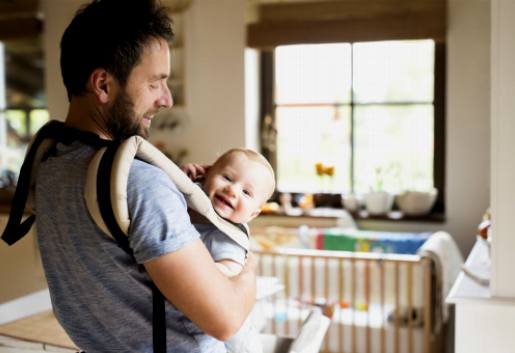Babyproofing 101: The Importance of Cabinet Locks
22 September 2025 by Frederick R.As a parent, ensuring the safety of your little one is a top priority. One of the key aspects of babyproofing your home is securing cabinets and drawers to prevent accidents and keep dangerous items out of reach. In this article, we will explore the importance of cabinet locks in babyproofing, the different types of locks available, and how to effectively install and maintain them. Understanding the curiosity of babies and toddlers, as well as the potential risks associated with unsecured cabinets, is crucial for creating a safe and secure environment for your child. Let's dive into the world of babyproofing and home safety to ensure a secure and protected space for your little explorer.

Introduction to Babyproofing and Home Safety
Babyproofing your home is an essential step in ensuring the safety and well-being of your little ones. As babies and toddlers grow and explore their surroundings, they are naturally curious and eager to touch, taste, and explore everything they can get their hands on. This curiosity can lead to potential dangers, especially when it comes to unsecured cabinets and drawers. By taking proactive measures to babyproof your home, you can create a safe environment for your children to explore and play without the risk of accidents or injuries.Understanding the Curiosity of Babies and Toddlers
Babies and toddlers are naturally curious and love to explore their surroundings. They are constantly learning and developing new skills, including their ability to open and access cabinets and drawers. This curiosity can lead to potential dangers, as they may come into contact with harmful substances or objects that are not safe for them. Understanding the natural curiosity of babies and toddlers is essential in taking proactive measures to ensure their safety within the home.Risks Associated with Unsecured Cabinets
Unsecured cabinets pose several risks to young children, including access to dangerous items such as cleaning products, sharp objects, and medications. Additionally, heavy or breakable items stored in cabinets can pose a risk of injury if accessed by curious little hands.Types of Cabinet Locks
There are various types of cabinet locks available on the market, each offering different levels of security and convenience. Some common options include magnetic locks, adhesive locks, knob covers, and sliding locks. It's important to consider the specific needs of your home and the accessibility of the cabinets when choosing the right type of lock for your family.Installation of Cabinet Locks
When it comes to installing cabinet locks, it's important to choose the right type for your specific cabinets. There are various options available, including magnetic locks, adhesive locks, and sliding locks. It's important to carefully follow the manufacturer's instructions for installation to ensure that the locks are properly secured and effective in keeping curious little ones out of harm's way.Maintaining Access While Keeping Children Safe
Maintaining access while keeping children safe is an important aspect of babyproofing. It's essential to find a balance between allowing easy access to necessary items while also ensuring that potentially harmful items are out of reach for curious little ones. There are various cabinet lock options that can help achieve this balance, such as locks that allow for easy adult access but are difficult for children to open. It's important to consider the layout of your home and the specific needs of your family when choosing and installing cabinet locks to maintain access while keeping children safe.Common Mistakes in Babyproofing Cabinets
When it comes to babyproofing cabinets, there are some common mistakes that parents often make. One of the most common mistakes is using ineffective or cheap cabinet locks that can easily be bypassed by a determined toddler. Another mistake is not properly securing all cabinets, including ones that may contain harmful items such as cleaning supplies or medications. Additionally, some parents may forget to regularly check and maintain their cabinet locks, leading to potential vulnerabilities over time. It's important to be thorough and diligent when babyproofing cabinets to ensure the safety of your child.Additional Safety Tips Beyond Cabinet Locks
- Anchor heavy furniture and appliances to the wall to prevent tipping- Use outlet covers to protect little fingers from electrical hazards
- Install safety gates to block off stairs and other potentially dangerous areas
- Keep small objects and choking hazards out of reach
- Use door knob covers to prevent children from entering rooms or areas that are off-limits
- Consider installing window guards or stops to prevent falls
- Keep cleaning supplies and other chemicals locked away or out of reach
- Use stove knob covers to prevent children from turning on burners
- Keep hot items and sharp objects out of reach or secured with safety locks